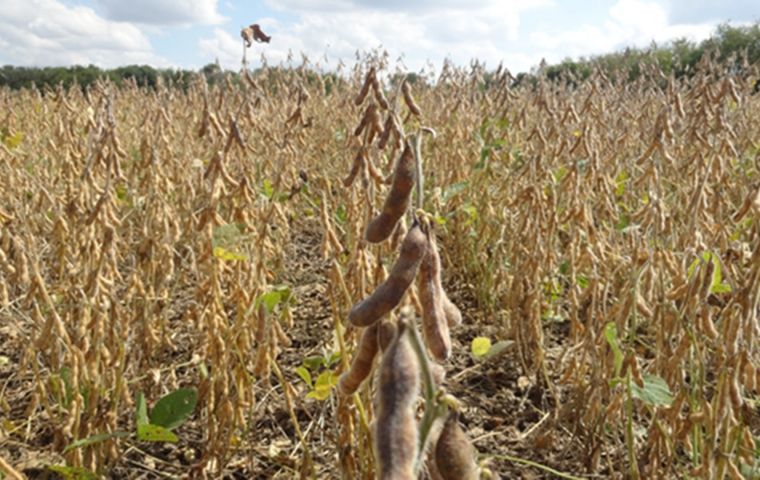MercoPress. South Atlantic News Agency
Poorer harvests heralded due to bad weather would mean fewer dollars for Argentina
 “The fall in exports could vary between 21% or 33%,” it was reported
“The fall in exports could vary between 21% or 33%,” it was reported Argentina's Agriculture exports are expected to drop by US$ 14,000 million due to the recent drought, according to projections from the Buenos Aires Grain Exchange released this week in Buenos Aires. The new figures might have an impact on the country's Gross Domestic Product (GDP) of between 1.1% and 1.8%.
“The fall in grain production implies a reduction in exports, in tax collection linked to the sector, and in its contribution to GDP,” the report on the 2022/2023 harvest made by the Buenos Aires Grain Exchange read. Due to the prolonged drought, smaller corn, soybean, and wheat harvests are forecast.
These figures mean a blow to the President Alberto Fernández administration which hoped to collect additional foreign currency to bolster the country's meager coffers to meet targets agreed upon with the International Monetary Fund (IMF) regarding a fiscal deficit reduction.
September's projections have been largely affected by recent adverse weather consisting of droughts and frosts. Even the most optimistic scenario now entails significant losses and lower revenues from agroindustrial exports.
In the case of the soybean complex, production could fall from the 48 million tons expected in September to between 41 and 35 million tons, which would represent a drop of between 16% to 29%. In the case of corn, foreign sales could fall between 16 and 36%, it was also reported.
With all items bound together (wheat, barley, corn, and soybean), export forecasts already heralded a 6% decrease from last year, which has worsened amid the latest weather developments. “The fall in exports could vary between 21% or 33%, affecting the availability of foreign currency by US$ 9.226 billion for scenario A, and by 14,115 million for scenario B,” the report warned.
The so-called soybean dollar implemented twice during 2022 allowed Economy Minister Sergio Massa to bring some relief to the country's treasury. But in the present conditions, an encore use of the tool would lose efficacy due to the smaller volumes, even though exporters are expected to push again for a differential exchange rate, in view of the possible fall in exports while there is still a relevant grain surplus.
According to the new assessment, the Argentine government faces a drop in the collection of export between US$ 2.182 and US$ 3.328 billion.




Top Comments
Disclaimer & comment rulesCommenting for this story is now closed.
If you have a Facebook account, become a fan and comment on our Facebook Page!